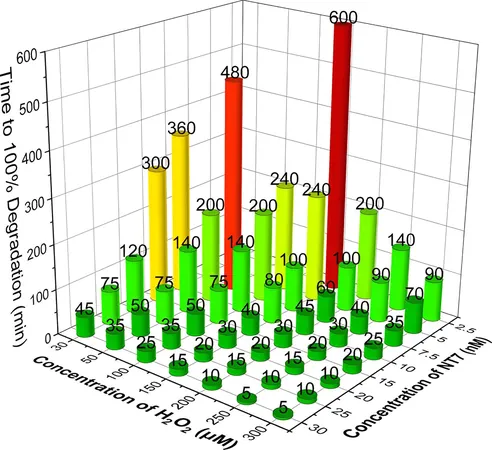
Shocking Links Found Between High Metal Levels and Cardiovascular Risks! Cadmium Takes Center Stage!
2024-09-23
Study Overview
In a groundbreaking study published in the Journal of the American College of Cardiology, researchers have revealed a striking connection between elevated levels of harmful metals—especially cadmium—and significant increases in coronary artery calcification (CAC). This alarming correlation was highlighted through a thorough analysis of participants from the Multi-Ethnic Study of Atherosclerosis (MESA), demonstrating the critical need for public awareness on environmental health risks related to metals.
Key Findings
The study found that individuals with higher urinary cadmium levels showed a staggering 51% and 75% increase in CAC over baseline and a 10-year follow-up period, respectively, in comparison to those with lower exposure. Cadmium isn't alone in this perilous landscape; exposure to toxic metals like tungsten and uranium also exhibited troubling associations with elevated CAC levels.
Research Leadership and Implications
Dr. Katlyn McGraw from Columbia University Mailman School of Public Health leads the research, emphasizing that "the strength of this study lies in its longitudinal assessment," which highlights the progression of arterial calcification linked to metal exposure over time. This is especially concerning given that the American Heart Association (AHA) has officially classified contaminants like lead, cadmium, and arsenic as potential cardiovascular risk factors.
Dr. Gervasio Lamas from Mount Sinai Medical Center praised this research for being the first of its kind to longitudinally examine the progression of coronary artery calcification in relation to these toxicants. He points out the need for cardiologists to recognize environmental factors in their patients’ lives that could influence their cardiovascular health.
Study Population and Methodology
The study involved 6,418 participants without cardiovascular disease, measuring urinary concentrations of six different metals between 2000 and 2002. Participants underwent cardiac CT scans multiple times to assess their CAC levels accurately. Notably, the researchers utilized a spatially weighted score for CAC (CAC-SW), which provides a more nuanced measure of calcification compared to traditional methods.
Demographic Considerations
Even worse, demographic factors play a role in exposure levels, with higher metal concentrations found among certain groups—especially current smokers, who registered the highest cadmium levels. The study illustrated how metal exposure's damaging effects are comparable to those seen with traditional risk factors like smoking, diabetes, and high LDL cholesterol, suggesting that this is an area long overlooked in cardiovascular health discussions.
Recommendations and Calls to Action
In light of these findings, experts suggest proactive measures for individuals to mitigate risks. Simple precautions include investing in water filtration systems capable of removing heavy metals. Although chelation therapy exists for severe lead poisoning, recent studies indicate it might not effectively address low-level heavy metal toxicity in certain groups.
Importantly, a strong call for public health reform was issued, urging governments at all levels to reconsider acceptable limits for metals in our environment and tackle pollution, particularly in vulnerable communities. The study’s authors stress the urgent need for large-scale action to reduce toxic exposure and improve health outcomes for those disproportionately affected.
Conclusion
As Dr. McGraw notes, it’s critical for healthcare providers, particularly cardiologists, to consider environmental contributors to cardiovascular diseases. With heart health hanging in the balance, understanding the impact of metal exposure has never been more crucial. Are you aware of the metals lurking in your environment? It might be time to check and protect your heart!



 Brasil (PT)
Brasil (PT)
 Canada (EN)
Canada (EN)
 Chile (ES)
Chile (ES)
 España (ES)
España (ES)
 France (FR)
France (FR)
 Hong Kong (EN)
Hong Kong (EN)
 Italia (IT)
Italia (IT)
 日本 (JA)
日本 (JA)
 Magyarország (HU)
Magyarország (HU)
 Norge (NO)
Norge (NO)
 Polska (PL)
Polska (PL)
 Schweiz (DE)
Schweiz (DE)
 Singapore (EN)
Singapore (EN)
 Sverige (SV)
Sverige (SV)
 Suomi (FI)
Suomi (FI)
 Türkiye (TR)
Türkiye (TR)